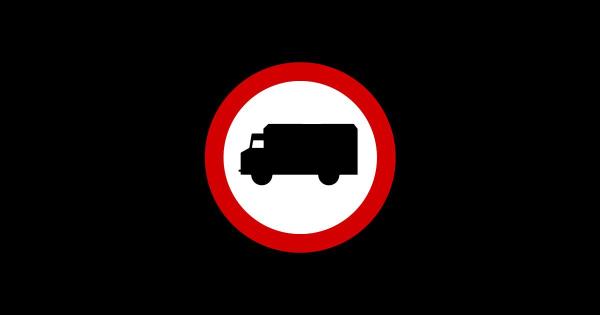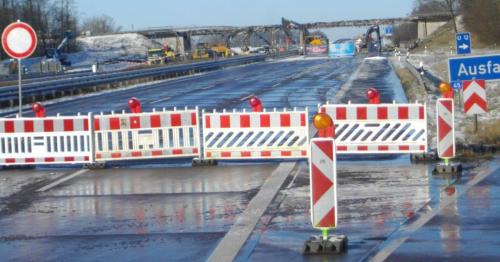Austria: additional restrictions on the A10 from April to June

A regulation issued by the Austrian Minister of Innovation, Mobility and Infrastructure on 16 April introduces additional HGV driving bans on the A10 motorway.
The ban applies to trucks and vehicle combinations with a permissible GVW over 7.5 t:
1️⃣ On the southbound carriageway (towards Villach) between the Salzburg junction (intersection of the A10 and the A1 West motorways) and the Pongau junction:
a) on Friday, 18 April, and every Friday from 6 to 20 June, between 1:00 PM and 7:00 PM,
b) on Wednesday, 28 May, from 1:00 PM to 7:00 PM,
c) on Saturday, 19 April and every Saturday from 7 to 21 June, between 7:00 AM and 3:00 PM;
2️⃣ On the northbound carriageway (towards Salzburg) between the Rennweg junction and the Golling junction:
a) on Friday, 13 June, and on Friday, 20 June from 1:00 PM to 7:00 PM;
b) on Saturday, 14 June, and on Saturday, 21 June, from 7:00 AM to 3:00 PM.
The following are excluded from the above prohibitions:
1. Transports of slaughter cattle or livestock, mail items and periodicals, supplies of drinks to tourist areas, urgent deliveries to petrol stations, catering establishments and events or repairs of cooling systems, towing services, roadside assistance, assistance in emergencies, medical care, the use of vehicles by road maintenance companies or to maintain road traffic, in road or rail construction, the use of vehicles by public security services, fire brigades, the use of vehicles for garbage collection, waste disposal, to maintain the operation of water treatment plants or the use of vehicles by companies providing regular passenger transport services, as well as journeys of vehicles used by travelling carnivals, incl. teams of lighting and sound engineers travelling to and from the venue, urgent journeys involving trucks, articulated vehicles or trucks with trailers used by the Austrian armed forces, journeys of self-propelled agricultural machines, humanitarian aid transports performed by recognized organizations as well as trips to and from the construction site undertaken for the purpose of the general renovation of the tunnel systems on the A 10 motorway between the Golling and Werfen junctions;2. Transports to or from places located:
a) in the Austrian administrative districts of Salzburg, Salzburg-Umgebung, Hallein, St. Johann im Pongau, Tamsweg, Zell am See, Spittal an der Drau, Villach-Land and Villach,
b) in the German district of Berchtesgadener Land;
3. Transport to or from places located:
a) in the Austrian districts of Braunau, Vöcklabruck, Gmunden, Murau, Liezen, Hermagor, Feldkirchen, Klagenfurt, Klagenfurt-Land and Lienz,
b) in the German districts of Traunstein and Rosenheim (including the city of Rosenheim),
c) in the Italian provinces of Udine, Pordenone and Gorizia,
d) in the Slovenian statistical regions of Gorenjska and Goriska;
4. Journeys for the exclusive purpose of transporting fresh fruit and vegetables, fresh milk and fresh milk products, fresh meat and fresh meat products, fresh fish and fresh fish products, live fish, eggs, fresh mushrooms, fresh baked goods and confectionery products, fresh herbs as potted or cut plants, and of ready-to-eat food preparations, including related empty journeys or return journeys to transport packaging of the aforementioned groups of goods. A consignment note or a loading list for individual un/loading points must be carried with each transport and should be presented on request during an inspection. It must be possible to determine the quantity of carried goods at the beginning and during the journey;
5. Journeys performed exclusively to transport goods to or from airports (Section 64 of the Aviation Act) or military airfields that are used for civil aviation purposes in accordance with Section 62 (3) of the Aviation Act;
6. Journeys involving combined rail-road freight transport from the consignor to the nearest technically suitable loading station or from the closest technically suitable unloading station to the consignee and back to the next loading station, provided that a fully completed document can be presented showing that the vehicle or its superstructures (swap bodies, containers) are to be transported by rail or have already been transported; this applies mutatis mutandis to combined water-road freight transport.







